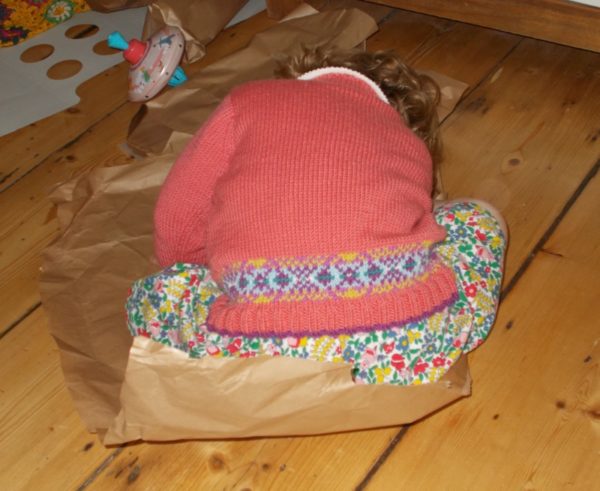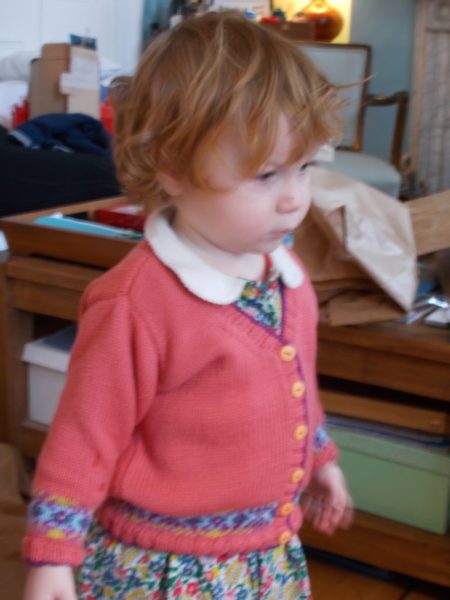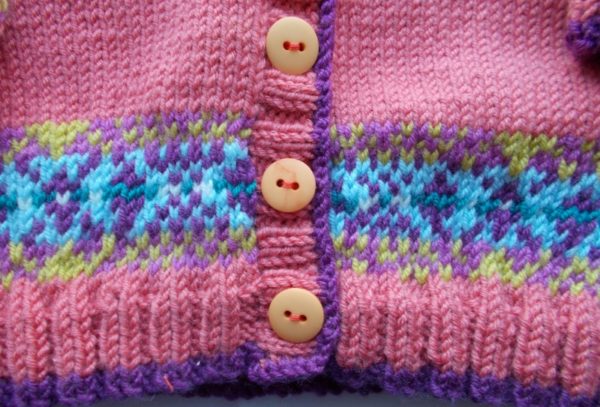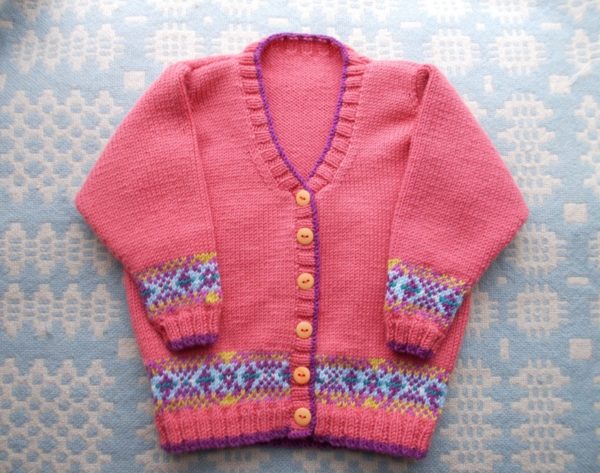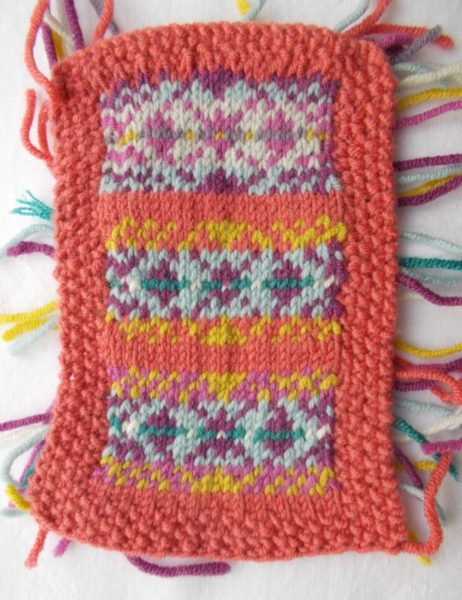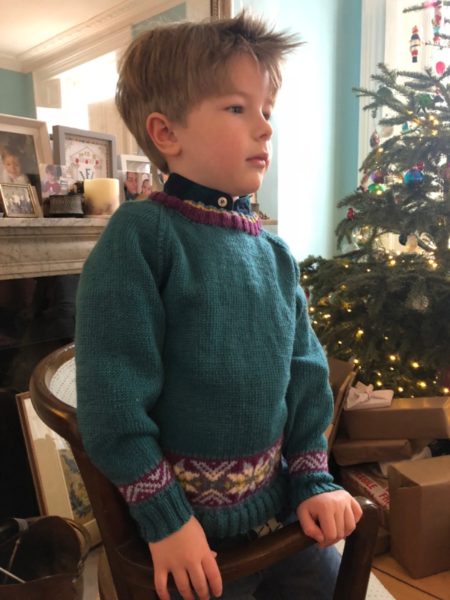
Jumper with Fair Isle Debbie Bliss Baby Cashmerino Book 6, Two colour Raglan Sleeve jumper)
Much travelling to see family in December left us perfectly happy to be on our own to see in the New Year. We even practised switching off of the TV to sit companionably side by side reading books. Alice Thomson in The Times writes that last year she had a target of reading a book a week (along with looking after a family of 4 and writing once or twice weekly for a national newspaper!). She did indeed manage 52 books, which slightly cowed me as I regard myself as a bit of a reader, but when I looked at the titles she was talking about I didn’t feel so bad. ‘Elinor Oliphant is Completely Fine’, I only moderately enjoyed on BBC iPlayer (abridged) when I listened to it while embroidering and I was glad not to have spent the time reading it myself. I was glad to see that she re-read Middlemarch and Great Expectations and impressed she included Madeline Miller’s Circe (Miller’s first book, Song of Achilles still awaits me at the bottom of my bedside pile). But my 2018 reading included the 600+ pages of Meetings with Remarkable Manuscripts by Christopher de Hamel, which involved much turning of pages to look at pictures and which, once finished, I started again, this time making notes. (The book has also yielded some wonderful lettering, giving me ideas for my embroidered alphabet.) Well, you get my point, targets don’t suit us all!
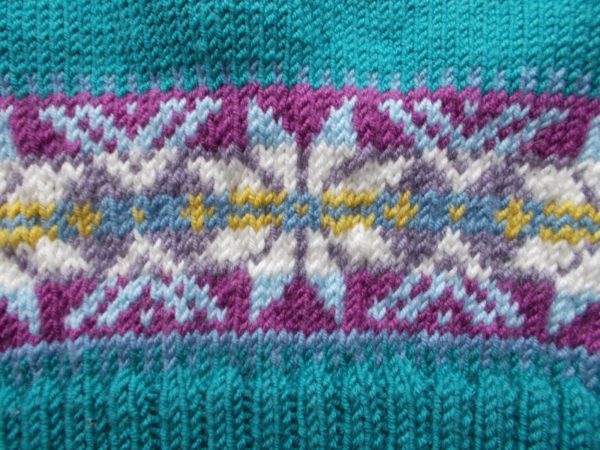
Fair Isle Band in Debbie Bliss Baby Cashmerino yarn
Christmas with relatives has probably left us all thinking about the dynamics of the family. Pity deeply the American triplets born in 1980 (the same year as my first child, Daughter No 1) but separated deliberately at birth to contribute to secret research into the nature/nurture debate. In 2018 there was a documentary, Three Identical Strangers telling their shocking story. (The study included separation of other twins, but not, so far as we know, other triplets.) A distinguished psychologist, Peter P.Neubauer, a Swiss born refugee from the Nazis, was in charge of the project but no findings were ever published and nor was the source of financial support ever revealed (all documentation is kept at Yale and not to be made available until 2065). Neubauer it seems never regreted the project. The boys need never have been split up as one of the foster families would have loved to have had all three. A true tragedy.
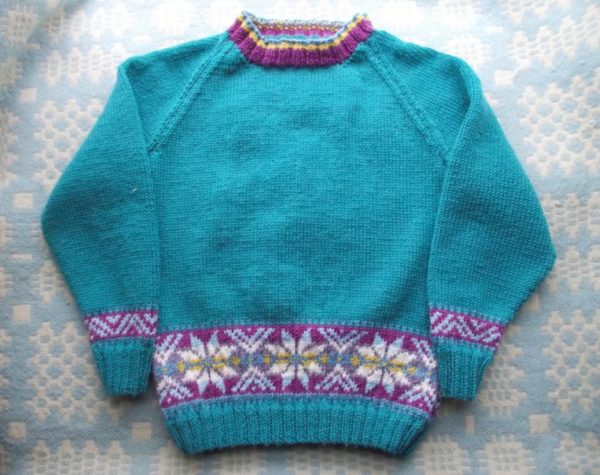
2 colour Raglan jumper in Debbie Bliss Baby Cashmerino
We have identical twin teenage girls in David’s family and though very close and very alike in looks, you can tell them apart if you study small details of appearance and manner. They also revel in telling you the ways in which they are different – the slightly different hair styles, the type of books they like to read and the subjects they most enjoy studying. For them being twins almost seems like constantly refining who you are – if you want to be like your sister, that’s fine, but perhaps if you tweak things a bit you become just that bit more specifically you. Potentially they could come to understand themselves much better than those of us who had an egg all to ourselves. You can certainly see why twin studies are beloved of behavioural scientists.
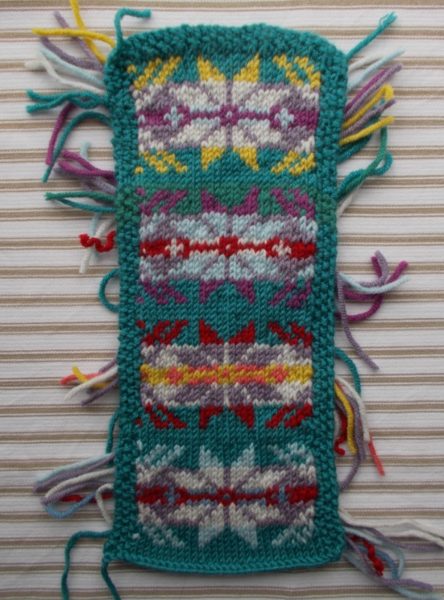
Fair Isle samples of snowflake pattern
I’ve never known triplets, although we did come upon a fascinating set recently. When we were in Ipsden and beginning our great clear out of the vicarage before moving, my husband enquired of the National Gallery whether they would be interested in his research papers on collectors and collecting (an unfashionable subject for many years but more popular when Dr Nicholas Penny was head of the gallery). We were surprised when a senior academic at the gallery said she and the National Gallery’s Archivist would like to come and have a look at them. The woman who came was brightly enthusiastic, warm and amusing and utterly distinctive as to appearance and voice. She was very enthusiastic about my husband’s 5 boxes of research papers and arranged to have them taken into the National Gallery’s Archive and catalogued. She was utterly lovely, focused and helpful and not at all a head in the clouds academic.
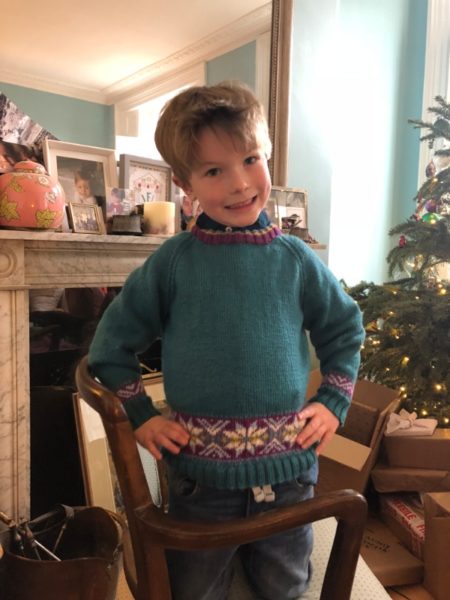
Small person asked to model his Christmas present
One day a year or so later we were watching the television news. The Fitzwilliam Museum in Cambridge had identified two bronzes as the work of Michelangelo but what fascinated us was not the bronzes but the woman telling us about them. She was the double of our National Gallery friend, in appearance, jollity and diction, so much so that my husband couldn’t resist emailing the one we knew to ask her if she had a twin. ‘No’, came the surprising reply. ‘There are three of us!’ At least two of them we know are art historians but then so was their father. We had an amusing time imagining these 3 little jolly, clever, lively, blond headed women as very small people and could only marvel that in bringing them up their parents didn’t seem to have squashed any of those wonderful, but possibly trying characteristics (when times by 3) out of them!
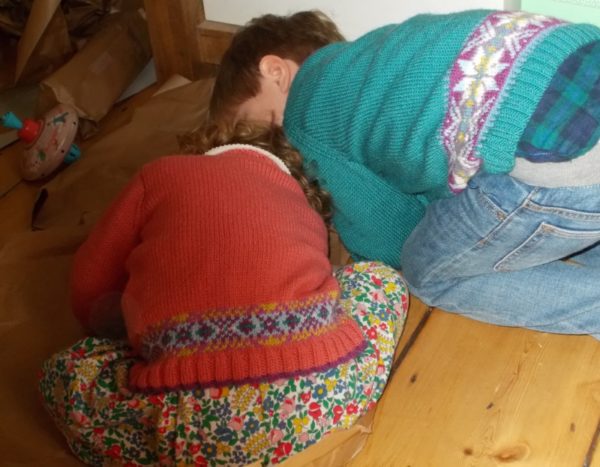
Two small people ijn their Christmas jumpers
For Christmas, I knitted three garments, one each for our 3 smallest grandchildren – imagine having triplets and every time you knitted one,you had to knit three! Anyway, to get back to the point, I had already ordered the green wool for this jumper when I heard the small person’s favourite person’s colour was purple, so I had no trouble choosing the main colour for the Fair Isle band. The finished jumper fit him surprisingly well – already – so I’ve got on with making him another one!

